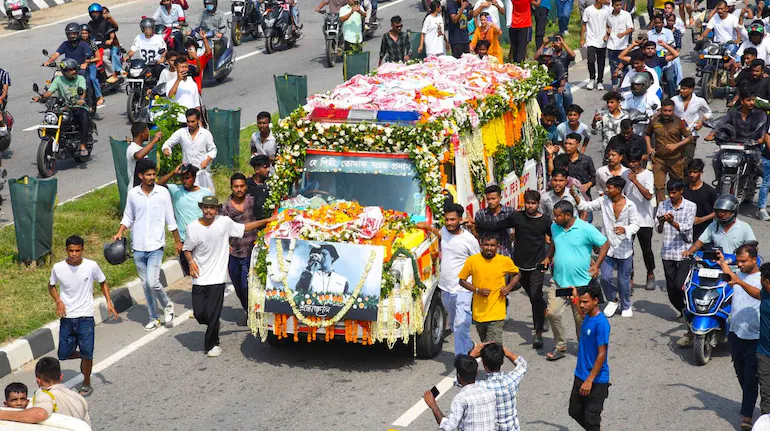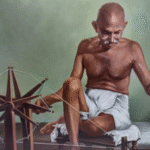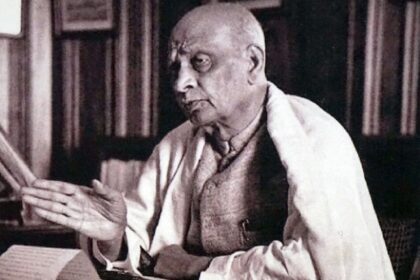On September 19, 2025, beloved Assamese singer Zubeen Garg — a household name across the Northeast and beyond — was reported to have died after he went swimming during a private yacht event in Singapore. What began as a sudden, tragic death has since escalated into a transnational criminal probe that, in the space of a few weeks, has seen multiple arrests, the sharing of forensic material between Singapore and India, and the invocation of murder charges against several people associated with the singer’s travel and performance arrangements. The latest shock: two people who performed alongside or accompanied him — a bandmate and a co-singer — were taken into custody by an Assam Police Special Investigation Team (SIT), bringing the number of arrests in the case to four.
This article pieces together, the names and roles of those arrested, what investigators say so far, reactions from the music community and the public, and what the coming days may bring.
The basic facts so far
-
Death and location: Zubeen Garg reportedly died in Singapore after going for a swim during a yacht event tied to the North East India Festival on September 19, 2025. He was later found floating and pronounced dead.
-
Investigations: Both Singaporean authorities and Indian investigators have been involved. Singapore shared its autopsy report with Indian authorities, and Assam police expanded their probe.
-
Arrests: So far, four people have been arrested in connection with the case: Zubeen’s manager Siddharth Sharma, festival organiser Shyamkanu Mahanta, his bandmate Shekhar Jyoti Goswami, and co-singer Amritprava (Amritprabha) Mahanta. The latest two arrests were announced by Assam Police’s SIT amid intensifying inquiries.
It is crucial to stress that early-stage reporting often focuses on arrests and charges — meant to secure custody for questioning — and does not by itself establish deliberate wrongdoing. That distinction matters as the legal process moves forward.
Who are the arrested persons and why were they detained?

Reporting names four people connected to the event and its organization:
-
Siddharth Sharma — Zubeen Garg’s long-time manager. Authorities have said they were investigating the manager for “financial irregularities” connected to the singer’s engagements and travel arrangements; the FIR was later upgraded to include murder charges. Shyamkanu Mahanta (or Shyamkanu) — Organiser of the North East India Festival event in Singapore where Garg performed. Arrests of event organisers are not uncommon if investigators suspect errors or omissions in logistics or safety, or if inconsistencies emerge in witness statements. Reports indicate the organiser was arrested in Delhi and brought to Guwahati.
-
Shekhar Jyoti Goswami — A drummer and bandmate who is reported to have been with Garg at the yacht party and seen swimming near him. Eyewitnesses and CCTV or event footage are often critical to investigators; authorities reportedly detained him after reviewing evidence and statements.
-
Amritprava (Amritprabha) Mahanta — A singer who performed alongside Garg at the event and who, according to reporting, was also at the yacht. She was taken into custody along with the bandmate.
Police statements say arrests were made to enable detailed questioning and to prevent tampering with evidence while the probe continues. In high-profile, cross-border cases, authorities may attempt to rapidly consolidate key witnesses and persons present at critical moments to reconstruct events and timelines.
Forensics and the autopsy: what we know
A pivotal development in the case was Singapore sharing its autopsy report with Indian authorities. According to media reports, Singapore police cooperated with Indian investigators and handed over the autopsy and preliminary findings, which Assam police and the CID took into account as they expanded the inquiry. A second post-mortem was reportedly carried out in Guwahati as Indian authorities sought to corroborate the findings.
At present, public reporting indicates drowning has been cited in death documentation, but reporting also suggests that aspects of the scene, timings, and surrounding circumstances prompted Indian authorities to treat the case with greater gravity and add murder charges against certain accused persons. It’s common in such investigations for an initial cause of death (e.g., drowning) to be combined with adverse findings or suspicious circumstances that trigger further criminal scrutiny — for example, presence of substances, injuries inconsistent with accidental drowning, or errant timelines. However, the precise forensic details available publicly have been limited; some outlets report only that Singapore shared forensic material and that Indian agencies are pursuing follow-up examinations.
Why are investigators treating this as potentially more than an accident?

Several reasons — drawn from standard investigative procedure and from what media outlets report — can explain the escalation:
-
Discrepancies in witness statements or timelines. If accounts from staff, performers, and organisers do not align with recorded evidence (video, boat logs, phone GPS), investigators must resolve contradictions. Arrests are sometimes used to secure testimony while searches and evidence collection continue.
-
Forensic findings. An autopsy alone may not prove foul play, but if findings raise questions (e.g., signs inconsistent with simple drowning, presence of drugs or toxins, or injuries), the inquiry widens. Singapore’s forensic material being shared with Indian authorities suggests coordination to reconcile forensic findings with the sequence of events.
-
Possible financial or organisational motives. Reports mention investigators were looking into alleged “financial irregularities” related to the singer’s management and festival arrangements. While motive should not be assumed, investigators will explore all lines — financial, interpersonal, or negligence — that could explain negligence or wrongdoing.
-
Public pressure and high profile. High-profile deaths often trigger intense investigation due to media scrutiny and public demand for answers; this can accelerate arrests to keep the probe under tight control. But legal action must still be driven by evidence.
What did eyewitnesses and footage suggest?
Media outlets cite that a bandmate was seen swimming near Garg shortly before he was found. Eye-witness testimony, yacht CCTV footage, and any mobile phone videos taken at the event will be central to reconstructing the minutes and seconds before the incident. Police typically seize devices, review footage frame-by-frame, and match witness statements to recorded data. Public reporting so far points to such lines of investigation, although police have not released full transcripts or footage to the public.
Reactions — music community, family, public
Tributes have poured in from fans and colleagues across India and the Northeast; many have expressed shock and grief at Garg’s death. Simultaneously, coverage of arrests has polarized responses — some calling for swift justice, others urging restraint until due process runs its course. Social media has also been a mix of condolences, speculation, and, worryingly, misinformation. Journalists and fact-checkers have already flagged deepfakes and manipulated clips falsely purporting to show details of the incident; authorities and credible fact-check outlets have urged the public not to circulate unverified videos.
Legal process and what comes next
At this stage, the Assam Police SIT has custody of the arrested individuals for questioning. Legal steps likely to follow include:
-
Interrogation and statements from the accused and witnesses.
-
Detailed forensic tests (toxicology, histopathology, and any trace evidence).
-
Analysis of electronic data (phones, location pings, yacht GPS, CCTV).
-
Formal charges and remand hearings where courts decide on police custody or judicial remand.
-
If evidence suggests criminal culpability, the police will file a chargesheet and the case will proceed through the criminal courts. If evidence is insufficient, charges may be reduced or dropped. Throughout, the accused have legal rights and must be presumed innocent until convicted.
Because the incident happened in Singapore but involved Indian nationals and event organisation, cooperation between Singaporean and Indian authorities (e.g., sharing autopsy reports and forensic material) will be important for mutual legal assistance and any possible extradition or legal coordination.

Timeline (concise)
-
Sept 19, 2025: Zubeen Garg reportedly drowns after swimming at yacht event in Singapore.
-
Late Sept 2025: Initial reports, return of body, and local inquiries. Singapore conducts post-mortem and shares autopsy findings with Indian authorities.
-
Early Oct 2025: Assam Police SIT arrests manager Siddharth Sharma and organiser Shyamkanu Mahanta; later, bandmate Shekhar Jyoti Goswami and co-singer Amritprava Mahanta are arrested, raising total detained to four as probe intensifies.
(Exact dates of arrests and official filings are in the cited news stories and may be updated as courts process the matter.)
Final note — what to watch next
-
Chargesheet or remand orders: will indicate the facts police believe they can prove and whether courts allow continued custody.
-
Detailed forensic disclosures: Indian investigators and Singapore authorities coordinating to reconcile autopsy and forensic timelines.
-
Official statements from the family, legal teams, and police: these will clarify positions, defence arguments, and investigative leads.






